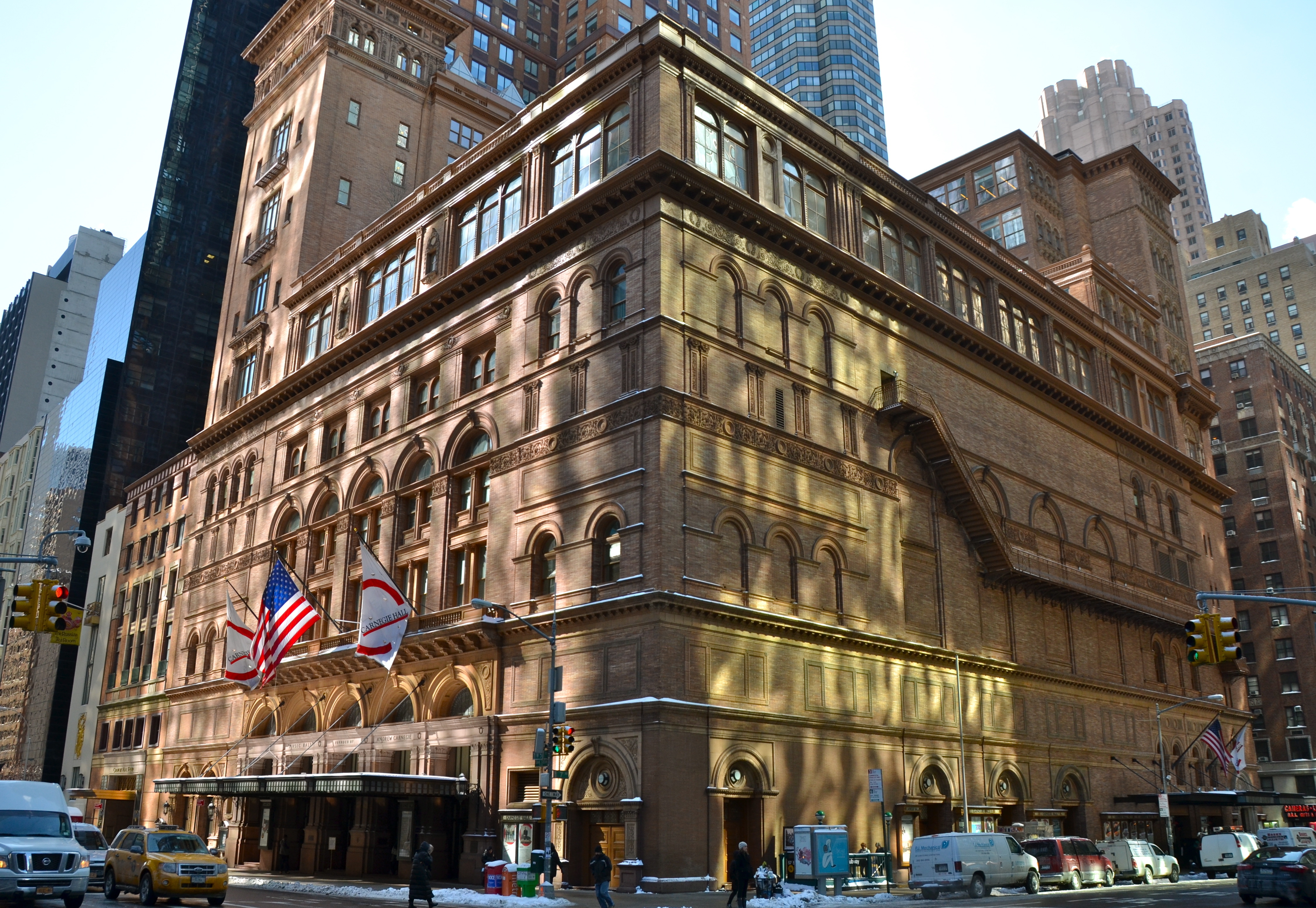Carnegie Hall is a famous concert hall in New York City. It stands at 57th Street and 7th Avenue in the New York borough of Manhattan. Carnegie Hall consists of three theaters. The largest is the Isaac Stern Auditorium, which seats 2,804 people. It is the home for classical orchestral performances but has also hosted jazz concerts, lectures, and educational events. The auditorium is noted for its fine acoustics. The Judy and Arthur Zankel Hall has a flexible seating capacity of up to 644. It is used for a variety of educational and performing activities. The Joan and Sanford I. Weill Recital Hall seats 268. It is used for recitals, chamber music performances, classes, and discussions. The Rose Museum at Carnegie Hall has a permanent exhibition describing the hall’s history.

Carnegie Hall was built between 1889 and 1891 in the neo-Renaissance style, which emphasizes symmetry and Classical details, such as arches and columns. The American architect William B. Tuthill designed the structure. The building officially opened on May 5, 1891. It was called the Music Hall until 1894, when it was renamed Carnegie Hall in honor of the Scottish-born American industrialist Andrew Carnegie, who contributed the $1-million cost of construction.
Carnegie Hall was the home of the New York Philharmonic Orchestra from 1892 until 1961. Many famous musical works received their world premiere in Carnegie Hall. They include the symphony From the New World (1893) by the Czech composer Antonin Dvorak, Concerto in F (1928) by the American composer George Gershwin, and the orchestral work Black, Brown and Beige (1943) by the American jazz pianist Duke Ellington.
